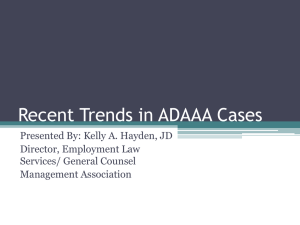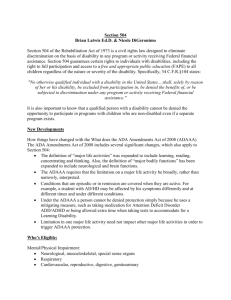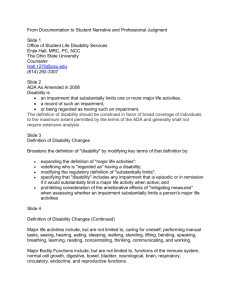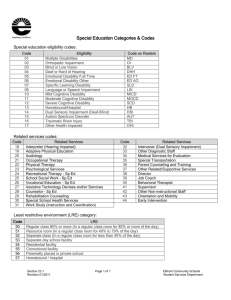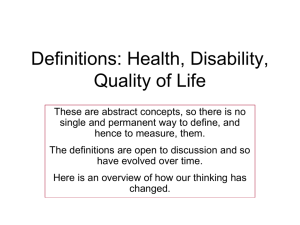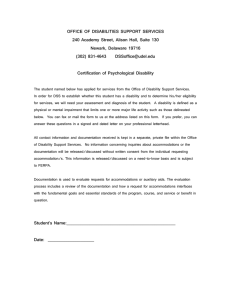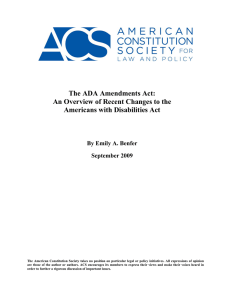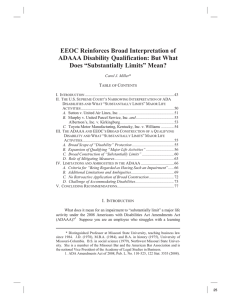The U.S. Equal Employment Opportunity Commission ______________________________________________
advertisement
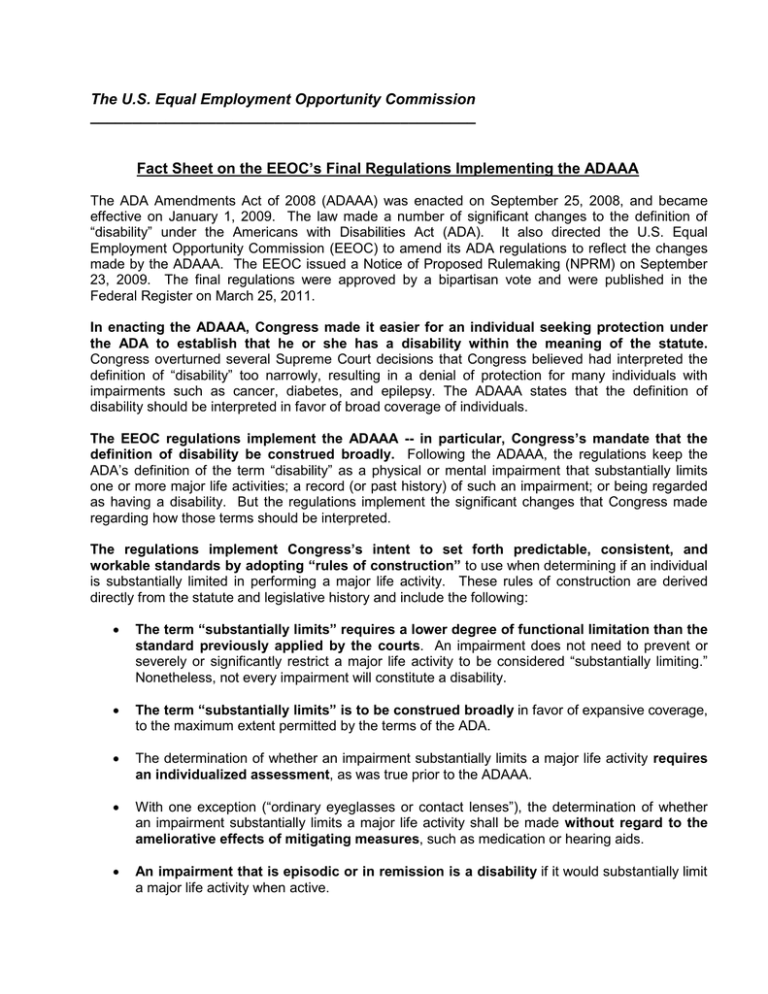
The U.S. Equal Employment Opportunity Commission ______________________________________________ Fact Sheet on the EEOC’s Final Regulations Implementing the ADAAA The ADA Amendments Act of 2008 (ADAAA) was enacted on September 25, 2008, and became effective on January 1, 2009. The law made a number of significant changes to the definition of “disability” under the Americans with Disabilities Act (ADA). It also directed the U.S. Equal Employment Opportunity Commission (EEOC) to amend its ADA regulations to reflect the changes made by the ADAAA. The EEOC issued a Notice of Proposed Rulemaking (NPRM) on September 23, 2009. The final regulations were approved by a bipartisan vote and were published in the Federal Register on March 25, 2011. In enacting the ADAAA, Congress made it easier for an individual seeking protection under the ADA to establish that he or she has a disability within the meaning of the statute. Congress overturned several Supreme Court decisions that Congress believed had interpreted the definition of “disability” too narrowly, resulting in a denial of protection for many individuals with impairments such as cancer, diabetes, and epilepsy. The ADAAA states that the definition of disability should be interpreted in favor of broad coverage of individuals. The EEOC regulations implement the ADAAA -- in particular, Congress’s mandate that the definition of disability be construed broadly. Following the ADAAA, the regulations keep the ADA’s definition of the term “disability” as a physical or mental impairment that substantially limits one or more major life activities; a record (or past history) of such an impairment; or being regarded as having a disability. But the regulations implement the significant changes that Congress made regarding how those terms should be interpreted. The regulations implement Congress’s intent to set forth predictable, consistent, and workable standards by adopting “rules of construction” to use when determining if an individual is substantially limited in performing a major life activity. These rules of construction are derived directly from the statute and legislative history and include the following: • The term “substantially limits” requires a lower degree of functional limitation than the standard previously applied by the courts. An impairment does not need to prevent or severely or significantly restrict a major life activity to be considered “substantially limiting.” Nonetheless, not every impairment will constitute a disability. • The term “substantially limits” is to be construed broadly in favor of expansive coverage, to the maximum extent permitted by the terms of the ADA. • The determination of whether an impairment substantially limits a major life activity requires an individualized assessment, as was true prior to the ADAAA. • With one exception (“ordinary eyeglasses or contact lenses”), the determination of whether an impairment substantially limits a major life activity shall be made without regard to the ameliorative effects of mitigating measures, such as medication or hearing aids. • An impairment that is episodic or in remission is a disability if it would substantially limit a major life activity when active. • In keeping with Congress’s direction that the primary focus of the ADA is on whether discrimination occurred, the determination of disability should not require extensive analysis. As required by the ADAAA, the regulations also make it easier for individuals to establish coverage under the “regarded as” part of the definition of “disability.” As a result of court interpretations, it had become difficult for individuals to establish coverage under the “regarded as” prong. Under the ADAAA, the focus for establishing coverage is on how a person has been treated because of a physical or mental impairment (that is not transitory and minor), rather than on what an employer may have believed about the nature of the person's impairment. The regulations clarify, however, that an individual must be covered under the first prong (“actual disability”) or second prong (“record of disability”) in order to qualify for a reasonable accommodation. The regulations clarify that it is generally not necessary to proceed under the first or second prong if an individual is not challenging an employer’s failure to provide a reasonable accommodation. The final regulations differ from the NPRM in a number of ways. The final regulations modify or remove language that groups representing employer or disability interests had found confusing or had interpreted in a manner not intended by the EEOC. For example: • Instead of providing a list of impairments that would “consistently,” “sometimes,” or “usually not” be disabilities (as had been done in the NPRM), the final regulations provide the nine rules of construction to guide the analysis and explain that by applying those principles, there will be some impairments that virtually always constitute a disability. The regulations also provide examples of impairments that should easily be concluded to be disabilities, including epilepsy, diabetes, cancer, HIV infection, and bipolar disorder. • Language in the NPRM describing how to demonstrate that an individual is substantially limited in “working” has been deleted from the final regulations and moved to the appendix (consistent with how other major life activities are addressed). The final regulations also retain the existing familiar language of “class or broad range of jobs” rather than introducing a new term, and they provide examples of individuals who could be considered substantially limited in working. • The final regulations retain the concepts of “condition, manner, or duration” that the NPRM had proposed to delete and explain that while consideration of these factors may be unnecessary to determine whether an impairment substantially limits a major life activity, they may be relevant in certain cases. The Commission has released two Question-and-Answer documents about the regulations to aid the public and employers – including small business – in understanding the law and new regulations. The ADAAA regulations and accompanying Question and Answer documents are available on the EEOC website at www.eeoc.gov. 2
